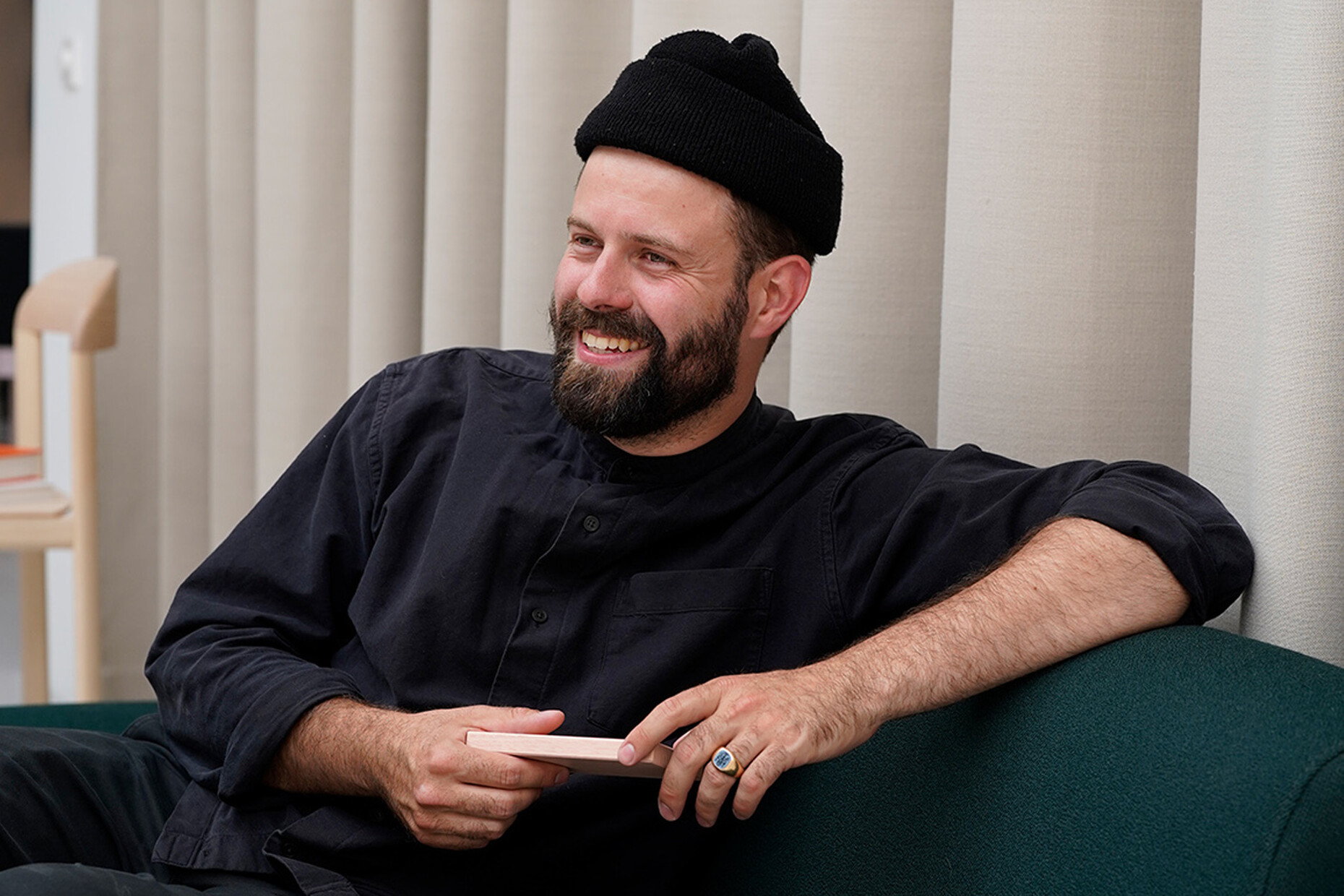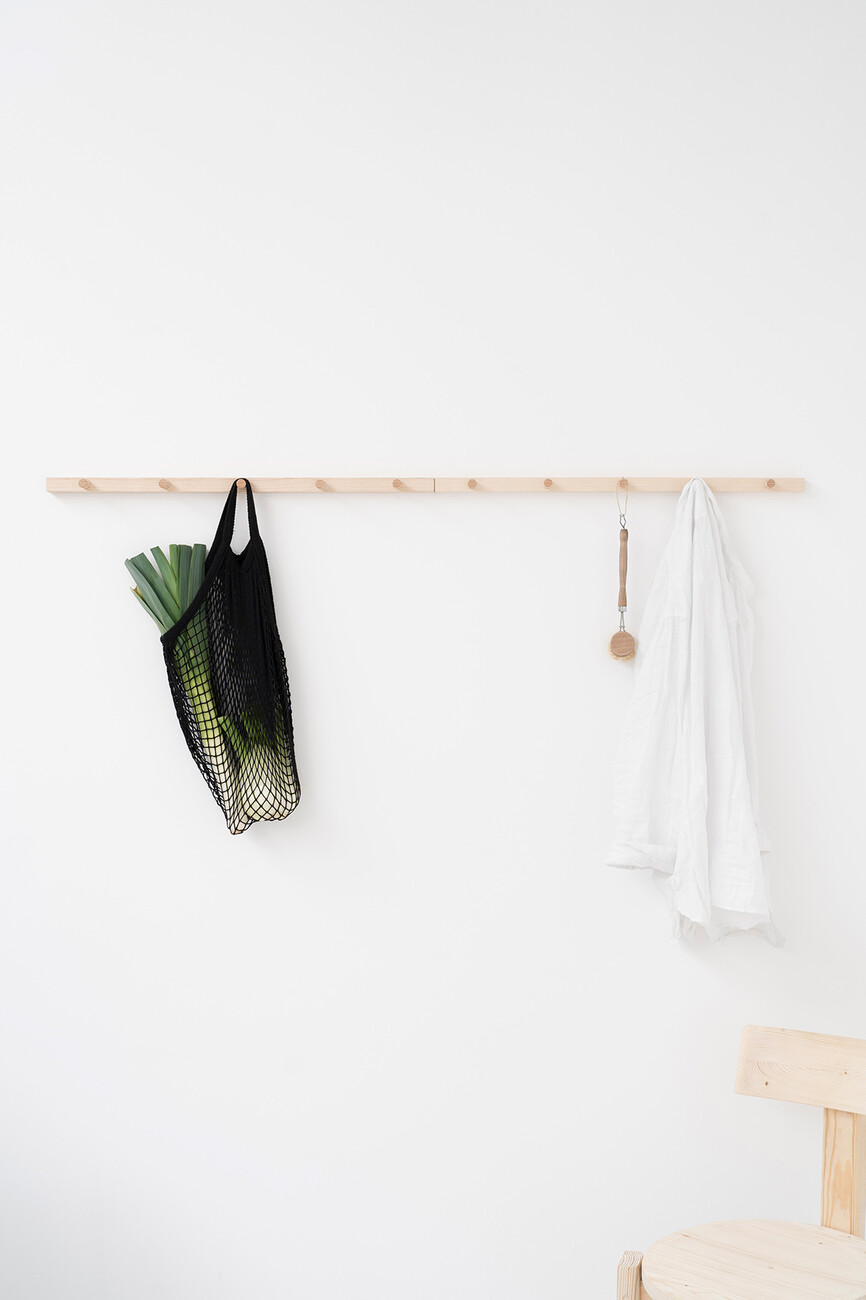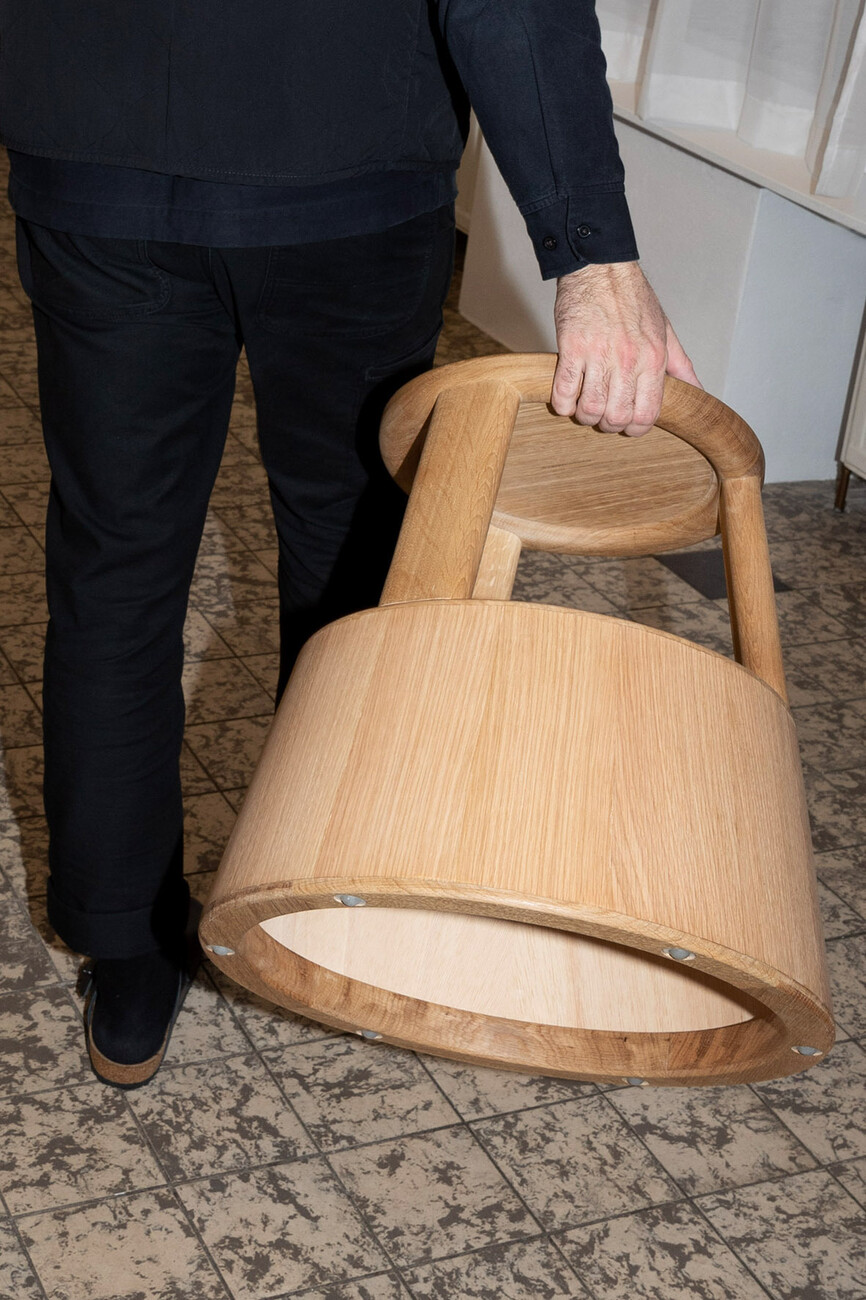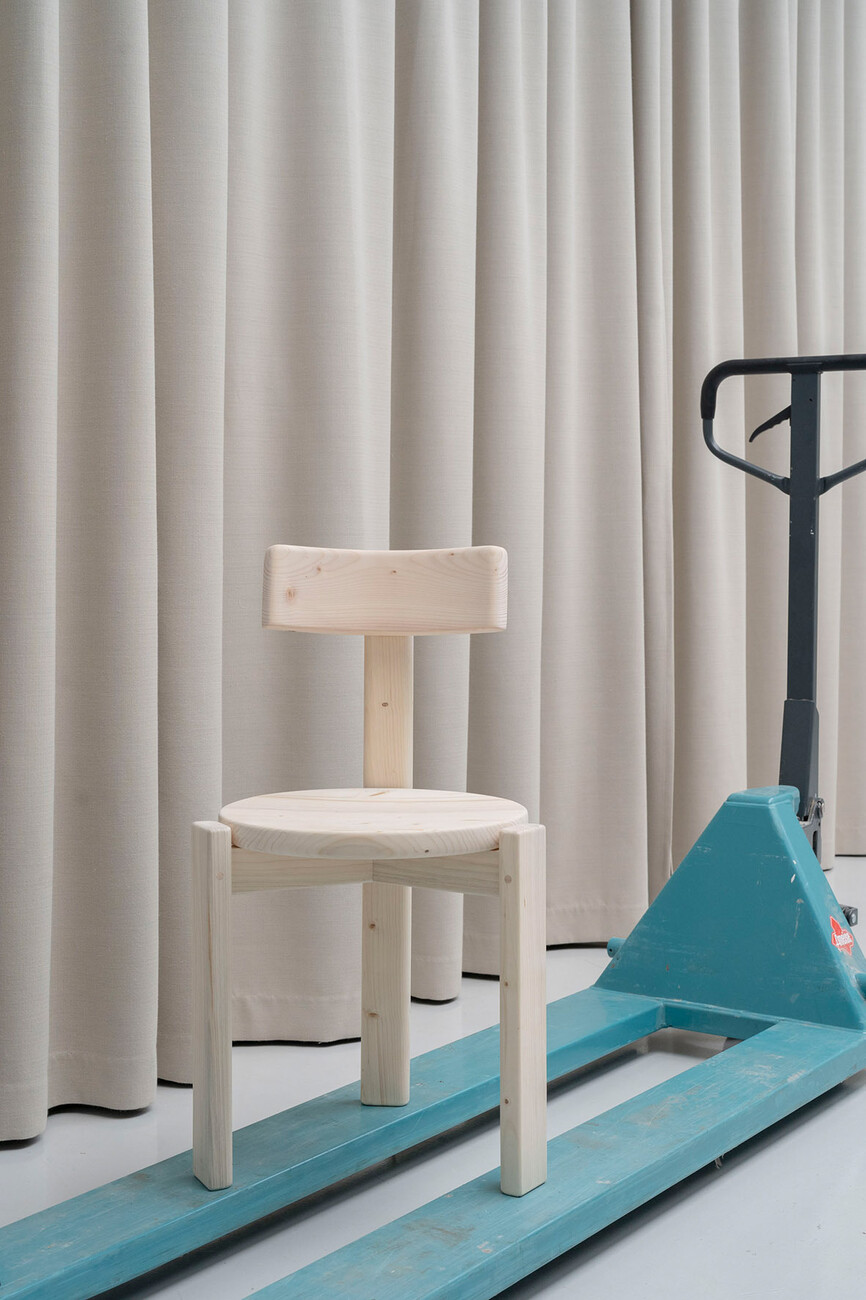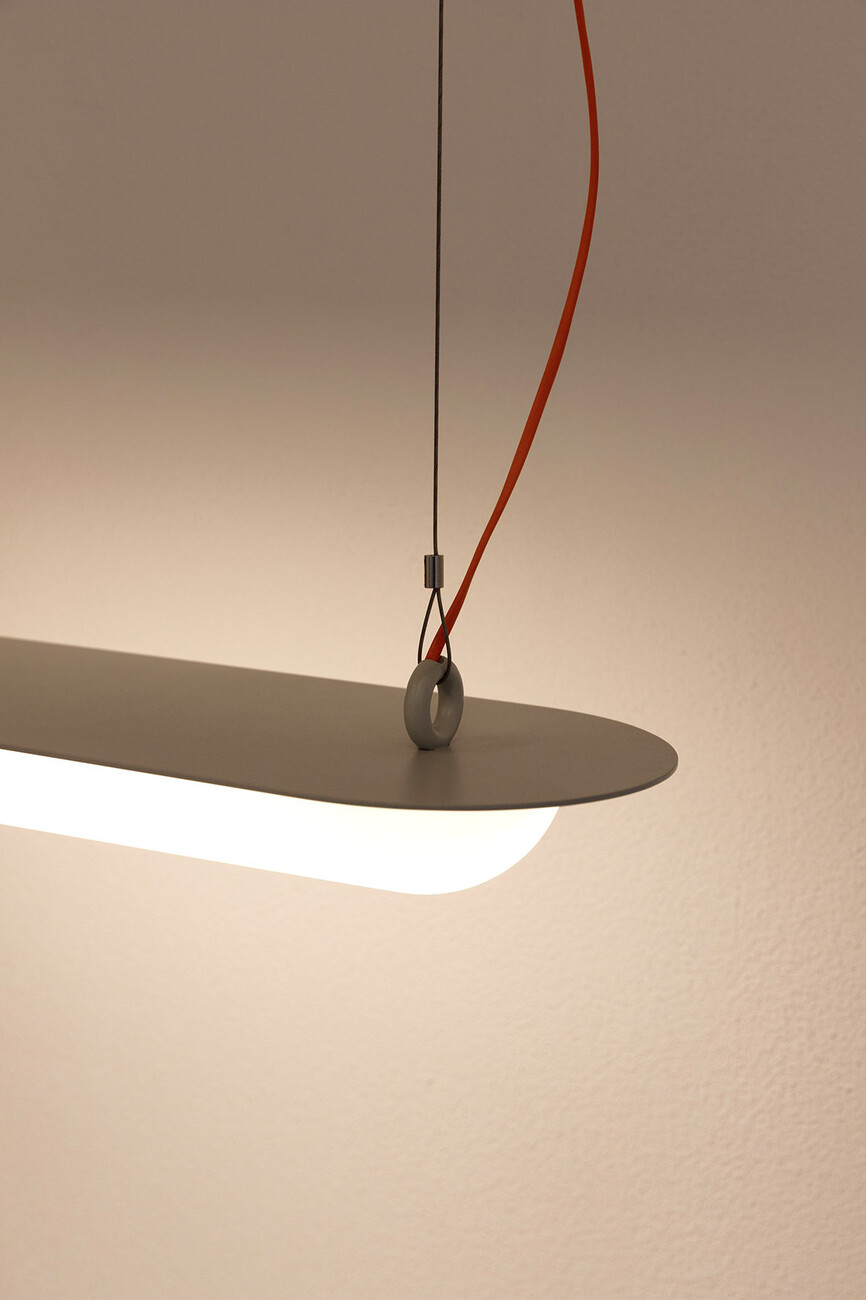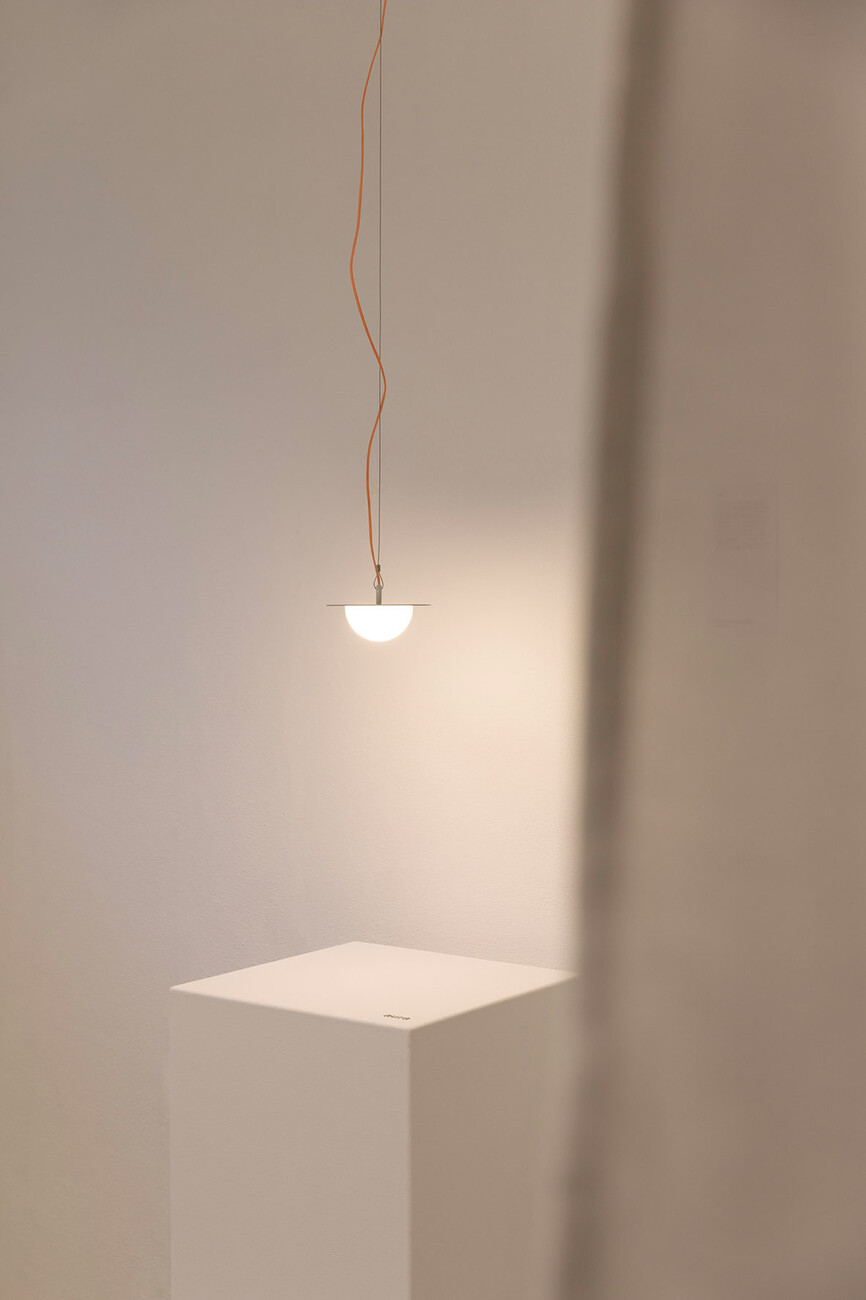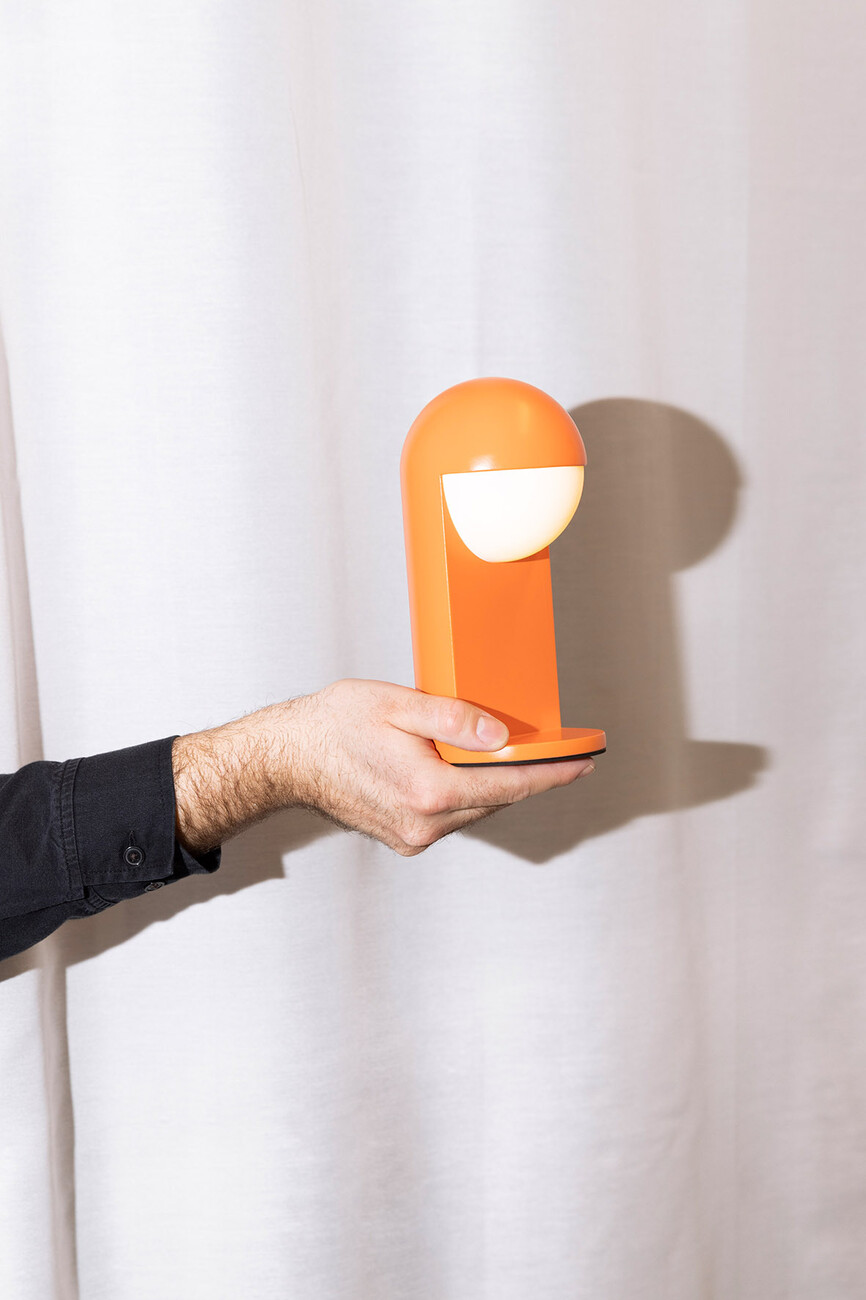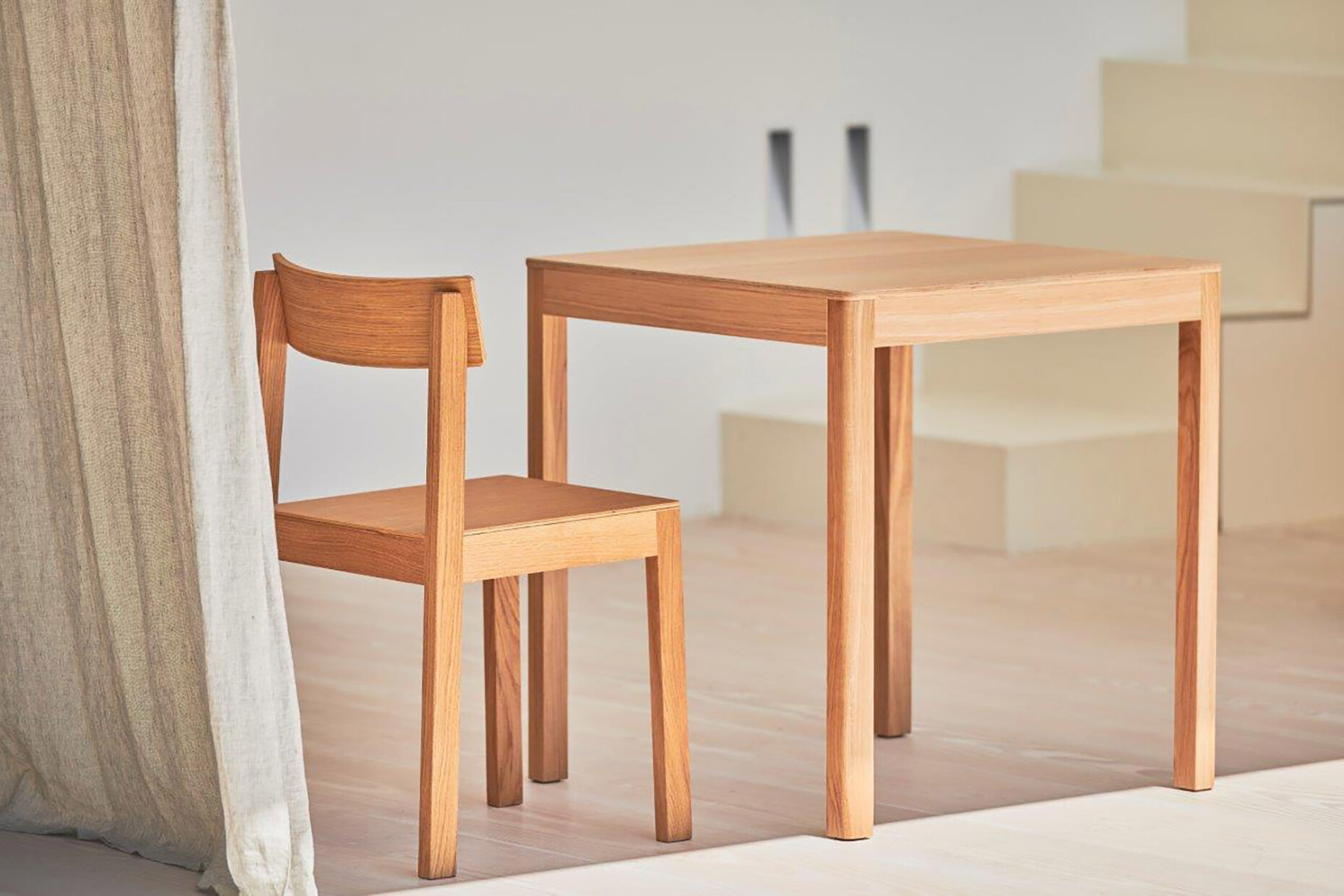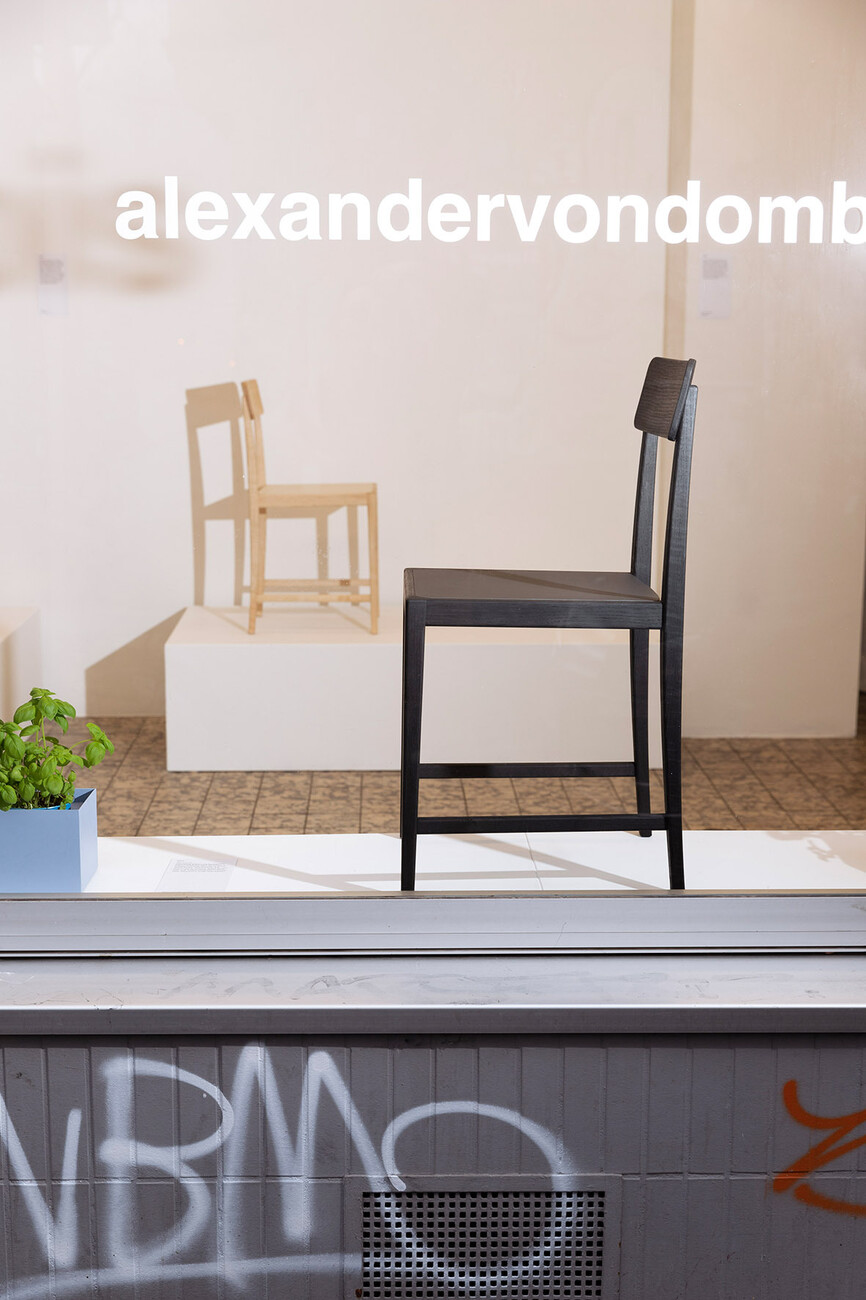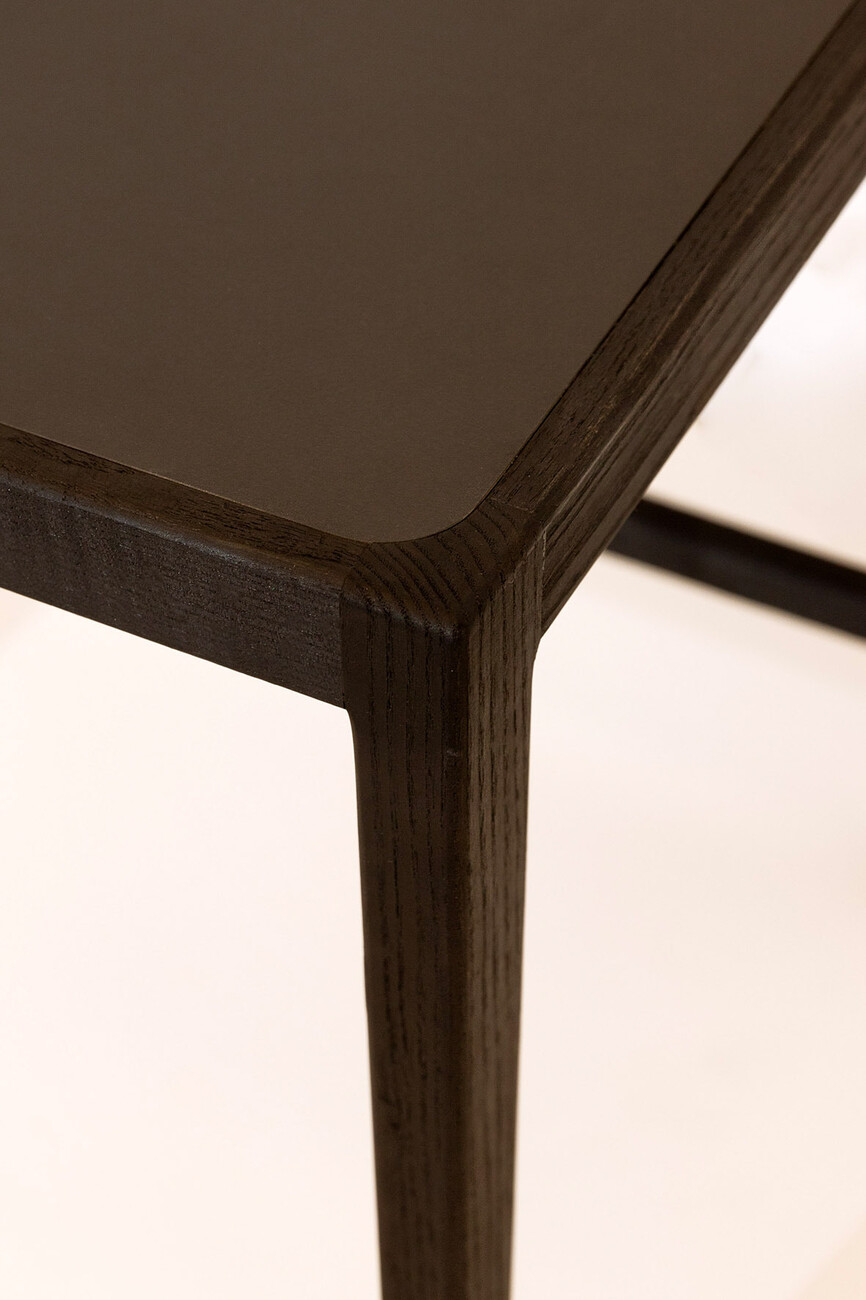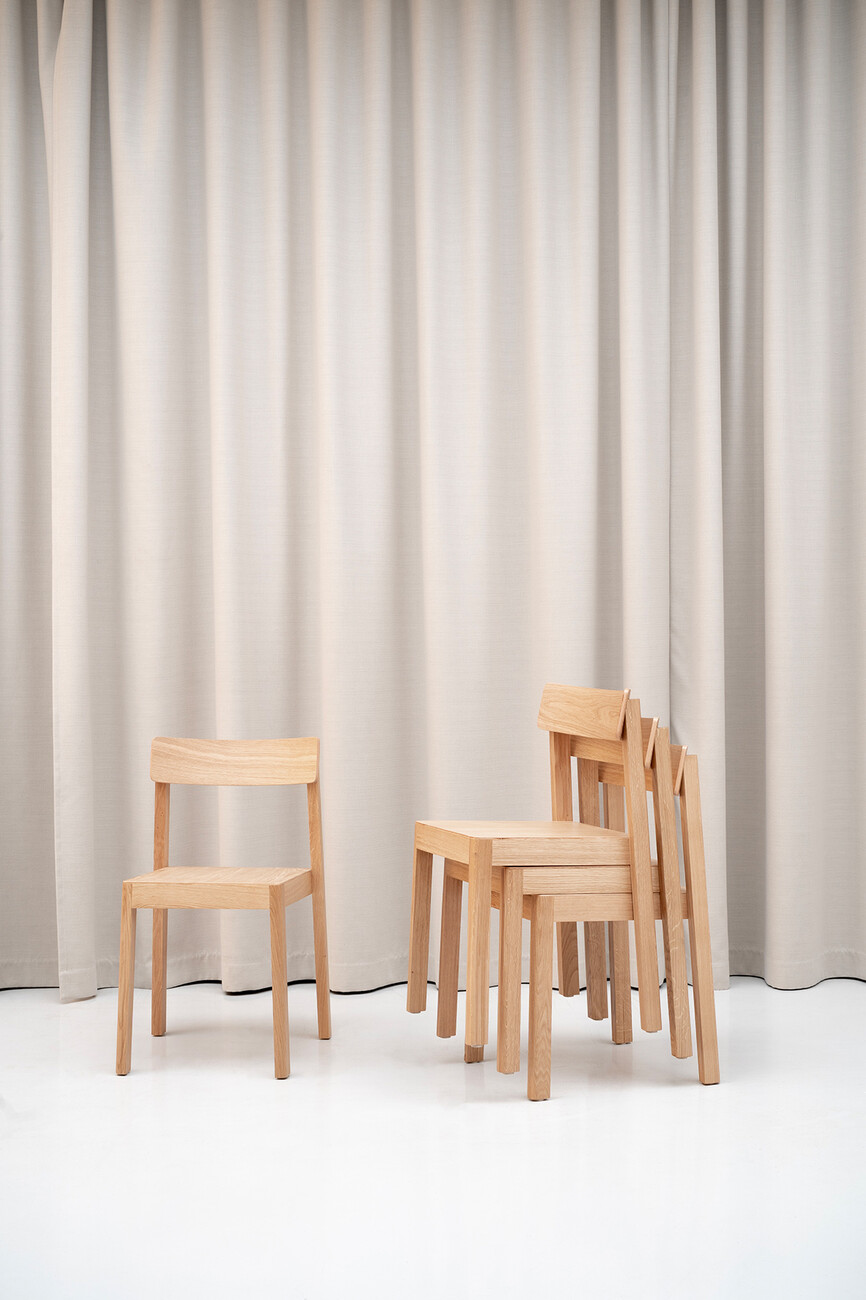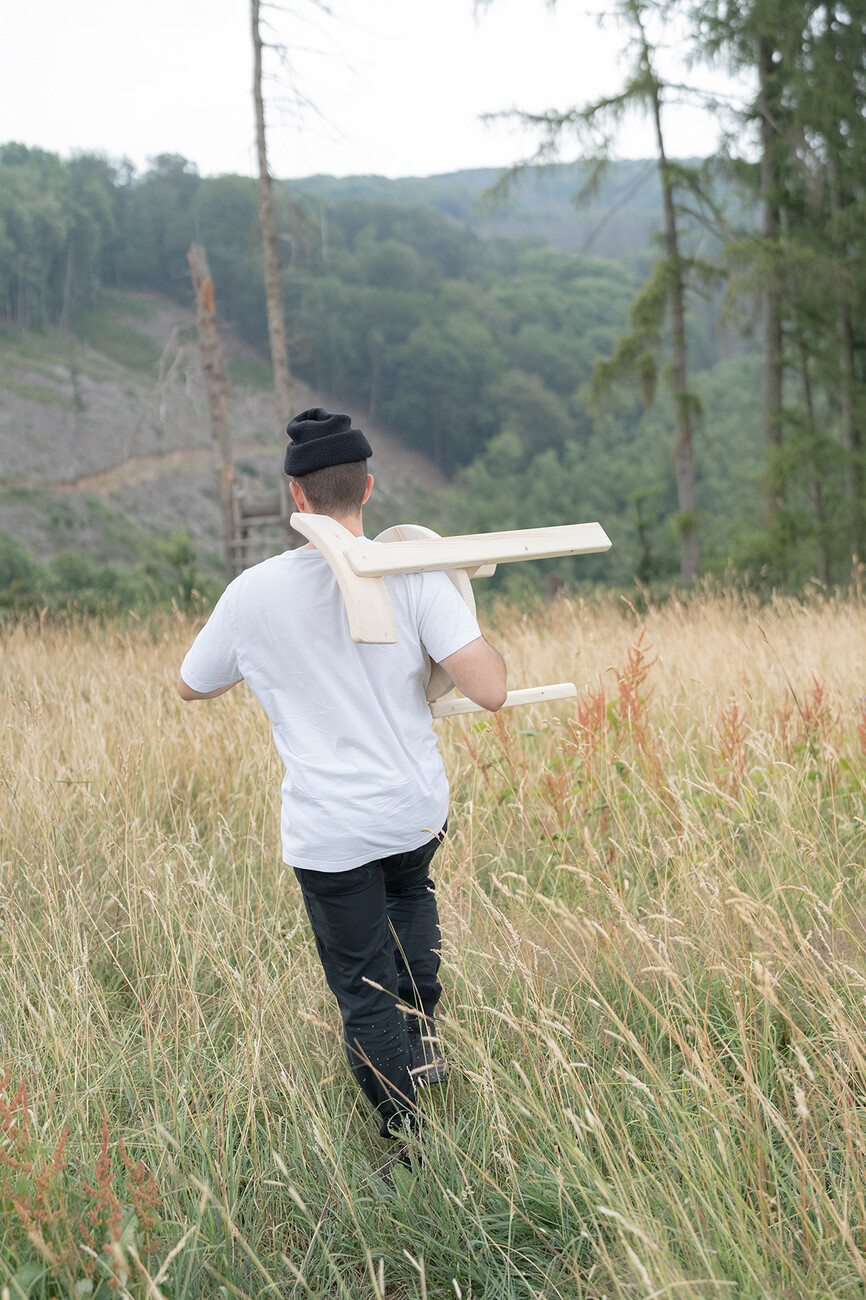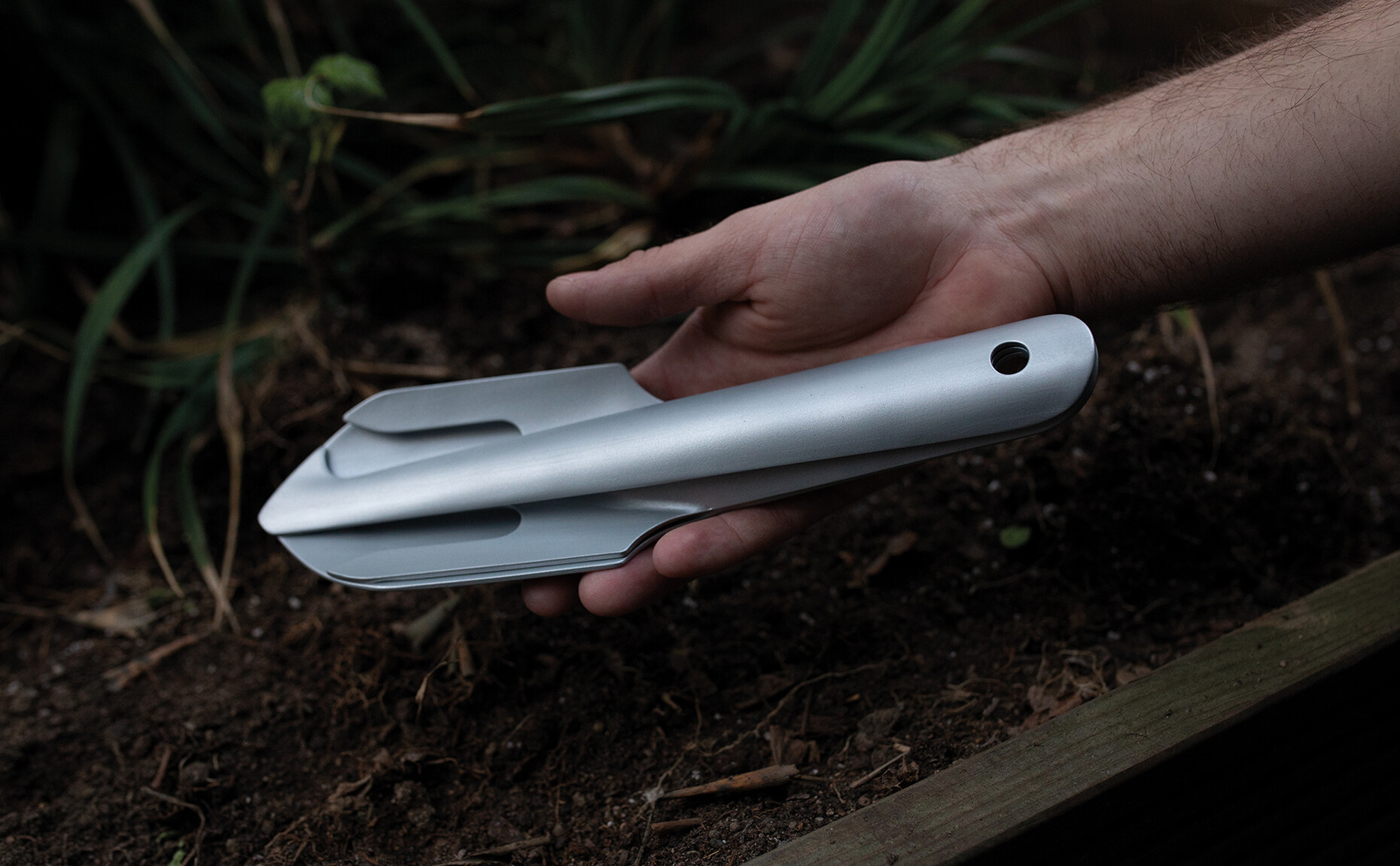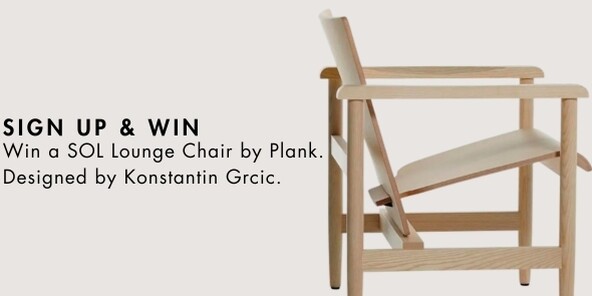YOUNG TALENTS
Attitude over hype
Jochen Overbeck: How did you see your first appearance at SaloneSatellite in Milan – did you expect so much media feedback?
Alexander von Dombois: The first time I went, I wasn't just a visitor strolling through the aisles with an aperitif, I was an exhibitor, and it was really fun! The SaloneSatellite is a completely different stage from, say, the Passagen in Cologne, where I had been before. My 99-year-old grandfather was certainly proud to see me in the newspaper. What I underestimated, however, was how exhausting such a trade fair is – after ten hours a day on concrete floors, my smart shoes eventually had to make way for Birkenstocks.
A lot has been written about your ‘Scala’ stool. It follows the simple principle of the rolling stools we know from supermarkets. Totally logical, but no one has ever seen it before. That seems to be one of your favourite design principles in general...
Alexander von Dombois: Absolutely. Another example is the ‘Haak’ hook rack. Here, too, the principle is simple: the hooks are inserted into holes that also conceal the wall mountings. I like it when function becomes form.
That's the DNA of German design history. Is that an idea that's important to you?
Alexander von Dombois: In many ways, I am a pragmatist. There is a saying: ‘Nothing lasts longer than a temporary solution.’ Sometimes I cobble something together – and then it just stays that way. What I definitely like is the beauty of simplicity. And I appreciate it when an object can be used without having to worry about touching it or scratching it. Just as we get wrinkles, grey hair and are marked by life over time, objects should also be allowed to age with dignity. For example, I've been carrying an old, scratched Opinel pocket knife with me since I was 13. The carbon steel blade has darkened and the handle has become greasy. I use it to cut salami and bread; it's simply a daily companion. That's exactly what I try to achieve with my objects: to create things that grow with people.
Where do we see that in your work?
Alexander von Dombois: That was one of the central ideas behind the Eli lamp, for example. It has something cute and childlike about it – almost like a little man – that makes you want to have it. But it's not a fashion statement; it stands out thanks to its timelessness and simplicity, which means it will fit into any room for a lifetime. I like to draw inspiration from archetypal forms. This also applies to seating furniture. If you think in completely abstract terms and ask yourself, ‘What does a chair look like if you were simply asked to draw one?’, you end up with a kind of archetype. I find it exciting to translate this basic form into a real piece of furniture.
You spent the first years of your childhood in South Africa – a country with extreme poverty. Does that inevitably lead to developing a different, more sustainable approach to design?
Alexander von Dombois: It was probably more of an unconscious influence, especially the realisation that resources are not available in abundance. This starts with water. That's why there is such a strong culture of handicrafts in South Africa. Toys and everyday objects are made from the simplest materials, such as wire and sheet metal. That had a lasting impact on me. I never really got into Game Boys or consoles. A carving knife and a stick in the garden were all I needed. I preferred a pair of round-nose pliers to a toy car – as long as I could shape something myself. I also became interested in archaeology at an early age, especially experimental archaeology. Even as a child, I found it fascinating how people in the past made tools and everyday objects from what was available in their environment. A good example is the Alpine region, where softwood has traditionally been used a lot – a material that was considered inferior elsewhere. I find that exciting: making the best of what you have. It may sound romantic, but at its core, it's sustainability in action. And it's precisely this idea that is reflected in my work today. When I look at my studio shelf, for example, I see things like a shard of safety glass or a rusty piece of sheet metal – finds from the street that I pick up because I find them interesting in some way.
Wie sah dein beruflicher Werdegang aus?
Alexander von Dombois: The path was a bit twisted: after secondary school, I originally wanted to become a photographer. After a year of voluntary service, I discovered the opportunity to do a graphic design apprenticeship with a high school diploma. While many of my fellow students did internships at agencies, I was drawn to a locksmith's shop and goldsmiths. I continued to work part-time at the locksmith's, where we built the public bookcases that can be seen in Cologne today, among other things. It quickly became clear to me that I didn't want to spend all day at a computer designing posters or flyers that would end up on some hard drive. Working with my hands, with materials, seeing the real results, all of that fulfilled me much more. I briefly considered an apprenticeship as a carpenter. But because I could never commit to one material – and still can't – product design was exactly the right path for me. Depending on the project, I work intensively with material properties and manufacturing processes. You can visualise a lot of things nicely on the computer – but is it also feasible?
You then studied sustainable design at Ecosign. One of your lecturers was Thomas Schnur. What did he teach you?
Alexander von Dombois: The hands-on approach: with a Japanese saw, a chisel and a little know-how, you can achieve a lot. This quickly produces a three-dimensional sketch, and you learn, for example, how to build a model of a chair from roof battens and Spax screws. This gives you an initial feel for the proportions.
As a designer, do you have a responsibility for sustainability?
Alexander von Dombois: Definitely. The question is, of course, to what extent you can influence that at all. But it is important to create incentives and always consider sustainability. Formafantasma is a good example of this – they work more conceptually, but are also very established. That is impressive. The key is to show manufacturing companies what is possible – and to take them by the hand to see how we can work together to be more sustainable.
What exactly is sustainability in design?
Alexander von Dombois: Here's where the philosophical question arises: Is it sustainable to build a piece of furniture out of pallets? Or can even plastic be sustainable – even though it is often considered the ‘bogeyman’ of sustainable design? The problem here usually lies more in how we use it. If a design is not just following a short-lived trend, but the product is also durable, then it can certainly be made from a material that initially has negative connotations. Furniture that is resold through classified ads or comes from bulky waste is a good example. It may have stood in someone's living room for 40 years – and now it is being used again. Perhaps you could say that a product is sustainable if it outlasts its lifetime and is passed on.
You recently presented the ‘Beetlechair’, a chair made from bark beetle-infested wood that would otherwise have to be disposed of. Is there already a forestry industry that processes diseased trees into furniture?
Alexander von Dombois: Yes and no. During this project, I had an insightful conversation with a sawmill operator. He said that given the massive spruce die-off caused by drought and bark beetles, it was unreasonable to cut down healthy trees – there is simply too much damaged wood, and we need to learn to use it sensibly. So the project also addresses the misguided developments in forestry, in particular the monocultures of spruce and the resulting bark beetle problems. The beetle isn't actually the problem. It's just following its instinct: eat, reproduce. The real problem is us, because we allowed such plantations to exist. Everyone points indignantly to palm oil plantations on other continents – and gives up Nutella – without questioning their own system.
From a design perspective, is it more difficult to work with damaged wood?
Alexander von Dombois: No. Everyone always talks about how wood has to be flawless – knot-free oak, free of swirls or other imperfections. But are these characteristics really flaws? After all, it is a natural material. On the one hand, we want wood in our living spaces precisely because of its naturalness. On the other hand, we expect it to behave like plastic – uniform, perfect, standardised. That's a contradiction in terms!
It's interesting that you mentioned Formafantasma earlier. They collaborated with Artek to design the Forest Collection – furniture made from birch wood that would normally be discarded due to its irregularities. When I saw it, I thought it was fantastic. And I immediately thought: with 19th-century cherry wood furniture, we're delighted to see knotholes...
Alexander von Dombois: The beetlechair was a project designed to show that wood with supposed flaws deserves respect. I think what Formafantasma and Artek are doing in this context is fantastic. Vaarni, who also come from Finland, are doing impressive work in this area. They use soft wood that changes over the years – and that brings us right back to the topic of dignified ageing. Furniture tells a story. We need to learn to appreciate such changes.
Another material you like to use is linoleum. You chose it for the Raam chair. Why?
Alexander von Dombois: I love this material – just the smell alone! At first, it seems very technical, and anyone who doesn't know what it is would probably guess leather or even plastic. But it's completely natural, made from linseed oil, wood or cork flour and chalk. And it gets more beautiful over time. When it gets greasy around the edges, it just looks great. There's no better material to write on. Today, you see linoleum table tops in every hip natural wine bar. I found it exciting to use this material again in a classic way as an inset seat in a wooden frame chair.
What's next for you? Is anything definite yet?
Alexander von Dombois: There's nothing I can say yet that will be coming out next week. But I'm in talks about a few projects that were shown in Milan. I think there will be something to see soon.
Alexander von Dombois designs functional products for everyday use with a clear design language and a conscious focus on sustainability. After initial design work in the field of graphic design, he completed a bachelor's degree in Sustainable Product Design at the Ecosign Academy for Design in Cologne. He gained further experience working in studios such as Gerdesmeyer Krohn and KaschKasch. His designs are characterised by a deep interest in traditional craftsmanship and a great affinity for materials.
